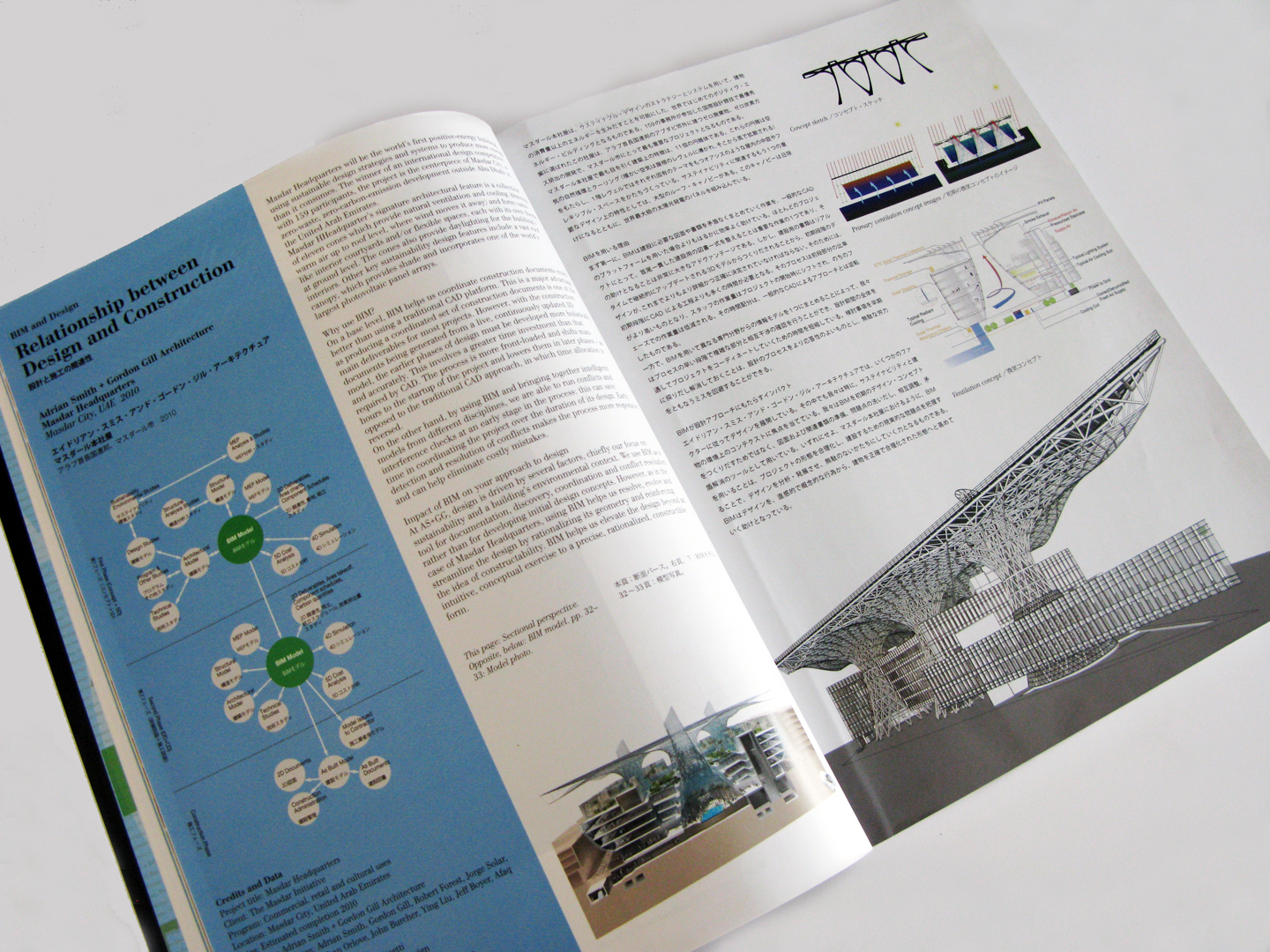aug 09 | Architecture and Urbanism
Relationship between design and construction
Masdar Headquarters will be the world's first positive-energy building, using sustainable design strategies and systems to produce more energy than it consumes. The winner of an international design competition with 159 participants, the project is the centerpiece of Masdar City, a zero-waste, zero-carbon-emissions development outside Abu Dhabi in the United Arab Emirates.
Masdar Headquarters' signature architectural feature is a collection of eleven cones which provide natural ventilation and cooling (drawing warm air up to roof level, where wind moves it away) and form oasis-like interior courtyards and/or flexible spaces, each with its own theme at ground level. The cones also provide daylighting for the building's interiors. Other key sustainability design features include a vast roof canopy, which provides shade and incorporates one of the world's largest photovoltaic panel arrays.
Why use BIM?
On a base level, BIM helps us coordinate construction documents much better than using a traditional CAD platform. This is a major advantage, as producing a coordinated set of construction documents is one of the main deliverable for most projects. However, with the construction documents being generated from live, continuously updated 3D model, the earlier phases of design must be developed more holistically and accurately. This involves a greater time investment than that required by CAD. The process is more front-loaded and shifts man-hours to the startup of the project and lowers them in later phases - as opposed to the traditional CAD approach, in which time allocation is reversed.
On the other hand, by using BIM and bringing together intelligent models from different disciplines, we are able to run conflicts and interference checks at an early stage in the process: this can save time in coordinating the project over the duration of its design. Early detection and resolution of conflicts makes the process more responsive and can help eliminate costly mistakes.
Impact of BIM on approach to design
At AS+GG, design is driven by several factors, chiefly our focus on sustainability and a building's environmental context. We use BIM as a tool for documentation, discovery, coordination and conflict resolution, rather than for developing initial design concepts. However, as in the case of Masdar Headquarters, using BIM helps us resolve, evolve and streamline the design by rationalizing its geometry and reinforcing the idea of constructability, BIM helps us elevate the design beyond an intuitive, conceptual exercise to a precise, rationalized, constructible form.
